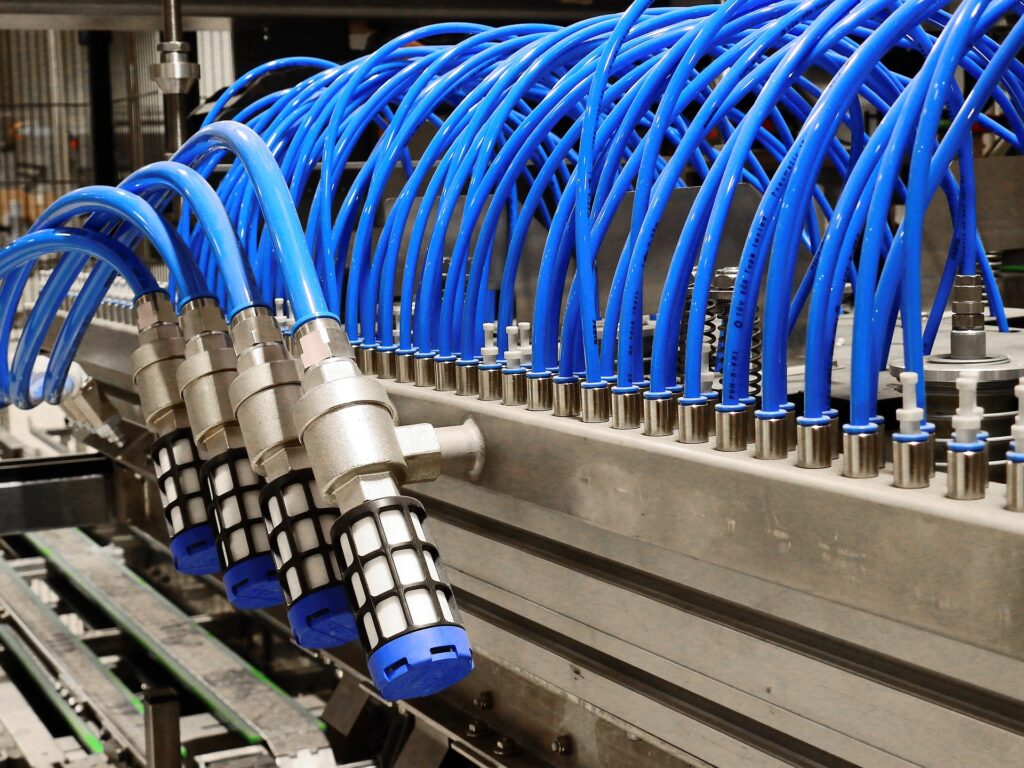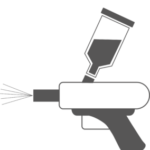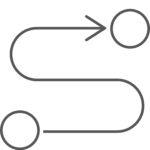
Application of pneumatic systems
- No Comments
In engineering and science, the use of air and neutral gases to generate pressure is referred to as pneumatics. Pneumatics is a subfield of fluid technology, just like hydraulics. Pneumatic systems, also called control systems, occupy an important position within the various technical control options. In the systems, the air is supplied in the form of compressed air to the desired location via valves.
Functionality of a pneumatic system
Compressed air generation: A compressor draws in air from the surrounding environment and compresses it. This generates between 6 bar and up to 40 bar.
Compressed air treatment: Since the air drawn in is often not really clean and contains dust, pollen or other particles, filters are used to remove the impurities from the air.
Compressed air distribution: The compressed air is piped to the consumers. This is mainly done directly, however there is also the possibility of storing the air. It is important that the pipes are free of defects and that they are not damaged or perforated. The prescribed bending radii must also be observed.
Applications of pneumatic systems
Actuator

Pneumatic drives can perform linear and rotary movements. In the pneumatic hammer, for example, the compressed air energy is converted into kinetic energy. Vibrating machines, slide valves and valves can also be equipped with pneumatic drives.
Spraying

In spraying, compressed air is used to apply or atomize substances. Examples of its use are spray guns for painting. Pneumatics is also used in sand and gravel blasting.
Transportation

The best-known example here is probably pneumatic tube mail. Compressed air is able to transport liquids, granulates and small piece goods through pipes. Pneumatics help to divert objects on conveyor belts and automatically store and retrieve workpieces.
Control

Deviations in weights, shapes and distances can be detected using pressure changes. Many positioning, sorting and machining systems use pneumatics to handle components.
Structure of a pneumatic control system
Pneumatic controls consist of the control system and the power-carrying unit. Within the control section, all mechanical, electrical and/or pneumatic processes are registered and processed. The control section systems provide all output signals that are decisive for the behavior of the drive elements.
Advantages and disadvantages of pneumatic systems
Advantages: A pneumatic system is relatively insensitive to environmental influences and comparatively inexpensive compared to, for example, hydraulic systems. In addition, the system has a high insensitivity to temperature and a high level of safety, as there is no risk of explosion or fire with compressed air.
Disadvantages: Pneumatic systems can “only” bridge a distance of up to 200 meters and the signal transmission speed is always limited by the speed of sound. In addition, the energy density of a maximum of 15 bar is considerably lower than, for example, with hydraulic systems.


